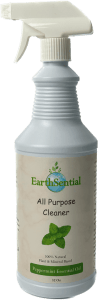The Popularity of Using Essential Oils Topically for Various Purposes
Essential oils have been used since the dawn of time, and in recent years, their popularity has skyrocketed, particularly in the realm of topical application on the skin. These precious oils have been treasured for centuries for their remarkable properties and are now capturing the attention of a wide range of individuals seeking natural solutions for skincare and personal well-being. The ancient wisdom of utilizing essential oils topically has resurfaced, bringing with it a renewed fascination and appreciation for their incredible benefits.
When applied topically, essential oils offer a convenient and direct way to enjoy their beneficial properties. These potent oils have the ability to improve the appearance of healthy-looking skin, leaving it feeling nourished and rejuvenated. Whether you want to enhance your skincare routine or create a spa-like experience at home, incorporating essential oils into your daily self-care regimen can make a noticeable difference.
Understanding Proper Usage and Precautions for Skin Application
While using essential oils topically can be incredibly beneficial, it is crucial to understand and follow proper usage guidelines and precautions. Essential oils are highly concentrated and powerful substances, so it’s important to approach their application with caution.
One of the first steps in using essential oils topically is to carefully read the label instructions for each oil. Labels provide essential information about the oil’s specific usage recommendations, dilution ratios, and any potential warnings or precautions. Taking the time to familiarize yourself with these instructions will ensure that you are using the oil correctly and safely.
Additionally, it’s important to be aware of any potential photosensitivity concerns associated with certain oils. Some oils, particularly citrus oils, can make your skin more sensitive to sunlight. If you apply an oil that has photosensitizing properties, it’s best to avoid direct sunlight or UV exposure for at least 12 hours after application.
It’s always wise to start small when using essential oils topically, especially if you’re trying a new oil for the first time. Applying a small amount and observing your skin’s reaction over a few hours will help you determine if you have any sensitivities or adverse reactions to the oil. Remember, everyone’s skin is unique, so what works for one person may not work for another.
By understanding proper usage and taking necessary precautions, you can confidently incorporate essential oils into your skincare routine and enjoy their many benefits without any unwanted side effects. So, embrace the power of these natural wonders and unlock the potential of essential oils for your skin health and overall well-being.

The Benefits of Using Essential Oils Topically
When it comes to using essential oils topically, one of the greatest advantages is their ability to be easily absorbed by the skin. Unlike other products that may sit on the surface, essential oils penetrate the skin and deliver their beneficial properties directly to the targeted area. This direct absorption allows for quicker and more effective results, making essential oils a popular choice for addressing various skin concerns.
Improving the Appearance of Healthy-Looking Skin
Essential oils have a remarkable ability to improve the appearance of healthy-looking skin. These potent oils can help nourish, rejuvenate, and restore the skin’s natural balance. Whether you’re looking to reduce the appearance of blemishes, smooth out fine lines and wrinkles, or simply enhance your skin’s overall radiance, incorporating essential oils into your skincare routine can make a noticeable difference.
One of the fantastic ways to reap the benefits of essential oils is by incorporating them into your regular skincare routine. You can mix a few drops of your favorite essential oil with your moisturizer, serum, or face mask to boost their effectiveness and tailor them to your specific skin needs. By customizing your skincare products with essential oils, you can create a personalized regimen that addresses your unique concerns and promotes a healthy, glowing complexion.
Not only can essential oils enhance the effectiveness of skincare products, but they can also be added to your favorite cosmetics. From foundation to lip balm, adding a drop or two of essential oil can infuse your cosmetics with additional skincare benefits. It’s a simple yet effective way to harness the power of essential oils while enjoying your makeup routine.
Enhancing Massages and Bathing Experiences
In addition to skincare, essential oils can take your massages and bathing experiences to the next level. When added to carrier oils, such as coconut or jojoba oil, essential oils can create a soothing and aromatic massage oil that promotes relaxation and relieves tension. The combined power of touch and essential oils creates a truly indulgent and therapeutic experience for both the body and mind.
A few drops of essential oil in a warm bath or hot shower can transform the entire experience into a spa-like retreat. The steam carries the aromatic molecules of the oil, creating a sensory experience that uplifts the mood and promotes a sense of calm and relaxation.
By incorporating essential oils into massages and bathing, you can create moments of self-care and relaxation while reaping the many benefits these oils have to offer.
Incorporating essential oils topically provides a multitude of benefits for the skin, skincare routines, and overall well-being. Whether you’re seeking to improve the appearance of healthy-looking skin, personalize your skincare products, or elevate your self-care rituals, essential oils are a natural and effective choice. Embrace the power of these oils and discover the transformative effects they can have on your skin and daily routines.
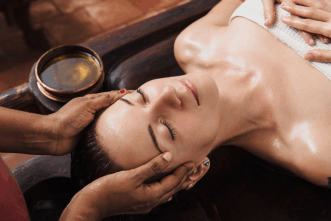
The Potency of Essential Oils and the Need for Caution
When it comes to essential oils, it’s important to recognize their potency and exercise caution when using them topically. These oils are highly concentrated and contain powerful plant compounds that can have both positive and negative effects on the skin. As a result, it’s crucial to handle them with care and respect their potency.
Checking Label Instructions for Specific Guidelines and Warnings
To ensure safe and effective use of essential oils, always take the time to read and follow the instructions on the label. Each essential oil may have specific guidelines and warnings that are essential to understand before applying them to your skin. These instructions may include recommended dilution ratios, application methods, and any precautions or contraindications for certain individuals.
By carefully reviewing the label, you can gain valuable insights into the proper usage of the essential oil and minimize the risk of adverse reactions or misuse.
Awareness of Photosensitivity and the Importance of Dilution
Photosensitivity is an important consideration when using essential oils topically. Some oils, particularly citrus oils like bergamot, lemon, and lime, can increase the skin’s sensitivity to sunlight. This can result in skin irritation, redness, or even burns when exposed to the sun.
To avoid any potential photosensitive reactions, it’s crucial to dilute these oils properly and avoid direct sunlight or UV exposure for at least 12 hours after application. Dilution is also essential for many essential oils to prevent skin irritation or sensitization. Carrier oils, such as jojoba, almond, or coconut oil, can be used to dilute the essential oils and ensure safe application.
By diluting essential oils and being mindful of their photosensitivity, you can enjoy their benefits without compromising the health and integrity of your skin.
When it comes to using essential oils topically, safety should always be a priority. The potency of these oils necessitates caution and proper understanding of their usage. By checking label instructions, you can gain valuable insights into their specific guidelines and warnings. Additionally, being aware of photosensitivity and diluting essential oils properly ensures that you can enjoy their benefits while keeping your skin safe and healthy. Remember, with proper knowledge and precautions, you can harness the power of essential oils safely and effectively for your skincare needs.
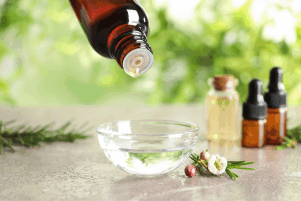
Determining the Amount of Essential Oil to Use
Essential oils are highly concentrated extracts derived from plants, which means they are incredibly potent. It’s crucial to understand the potency of each essential oil and use them in the appropriate dosages. While some oils are gentle enough to be applied directly to the skin, others require dilution to ensure safe usage.
Following Label Directions for Each Oil
To determine the right amount of essential oil to use, always refer to the label instructions provided by the manufacturer. These instructions offer valuable guidance on the recommended dosages for specific oils. By following these directions, you can ensure that you’re using the oils safely and effectively.
Dilution Ratios with Carrier Oils for Topical Applications
For many essential oils, dilution with a carrier oil is necessary before applying them to the skin. Carrier oils, such as coconut oil, jojoba oil, or almond oil, help to reduce the concentration of essential oils and prevent any potential skin irritation. The typical dilution ratio for topical applications is around 1-3 drops of essential oil per teaspoon of carrier oil, but it’s important to refer to the specific dilution guidelines provided for each oil.
Starting with Small Amounts and Observing Skin Reactions
When using essential oils topically, it’s always recommended to start with small amounts and observe how your skin reacts. Everyone’s skin is unique, and some individuals may be more sensitive to certain oils than others. By starting with a small quantity and monitoring any skin reactions, such as redness or irritation, you can determine if the oil is suitable for you and adjust the dosage accordingly.
Determining the right amount of essential oil to use requires an understanding of their potency, following label instructions, diluting them properly with carrier oils, and starting with small amounts to observe any potential skin reactions. By taking these precautions, you can ensure safe and effective use of essential oils for your specific needs.

Application Areas on the Body
When it comes to applying essential oils topically, there are several areas on the body that are commonly recommended. These areas allow for easy absorption and can maximize the benefits of the oils. Some of the recommended areas include the neck, forehead, temples, wrists, chest, and stomach. Gently massaging the oils into these areas allows for direct contact with the skin, promoting absorption and providing localized effects.
The extremities, such as the arms, legs, and bottoms of the feet, are also suitable for applying essential oils. The skin on these areas is typically less sensitive, making it easier to enjoy the benefits of the oils without any discomfort.
Areas to Avoid: Eyes, Ears, Nose, Sensitive Skin
While essential oils can provide numerous benefits, it’s important to exercise caution and avoid certain areas of the body when applying them topically. Areas such as the eyes, ears, and nose should be avoided to prevent any potential irritation or discomfort. These areas are highly sensitive, and direct contact with essential oils can cause stinging or even harm.
It’s crucial to be mindful of any areas of the skin that are particularly sensitive. If you have any skin conditions or known sensitivities, it’s best to avoid applying essential oils directly to those areas. It’s always better to err on the side of caution and choose alternative application methods or consult with a healthcare professional for personalized advice.
By focusing on the recommended areas for applying essential oils and being mindful of the areas to avoid, you can enjoy the benefits of essential oils while ensuring the safety and comfort of your skin.
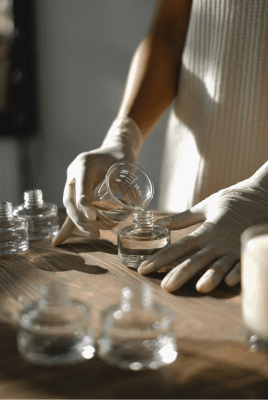
Blending Essential Oils for Topical Use
Considerations for Creating Unique and Personalized Scents
Blending essential oils allows you to tap into your creativity and create unique scents that cater to your preferences. By mixing different oils, you can customize the aroma to suit your mood and needs. Whether you’re looking for a soothing blend for relaxation or an invigorating blend to uplift your spirits, blending essential oils offers endless possibilities for creating personalized scents.
Understanding the Potency of Oils in the Blend
It’s important to recognize that different essential oils vary in potency. Some oils are gentle and can be applied directly to the skin, while others require dilution to ensure safe and effective use. Understanding the potency of the oils in your blend will help you determine the appropriate ratios and ensure that the blend is well-balanced and suitable for topical application.
Safe Handling Procedures and Reading Instructions
When blending essential oils, it’s crucial to follow safe handling procedures and carefully read the instructions provided for each oil. Some oils may have specific guidelines or warnings that need to be taken into account. It’s important to familiarize yourself with this information to ensure you use the oils safely and avoid any potential adverse effects.
Dilution with Carrier Oils for Safe and Effective Use
Dilution is often necessary when blending essential oils for topical use. Carrier oils, such as olive oil or coconut oil, can be used to dilute the essential oils and make them safe for application on the skin. The carrier oil serves as a base and helps distribute the essential oils evenly, reducing the risk of skin irritation or sensitivity.
To achieve a proper dilution, it’s generally recommended to mix one to three drops of essential oil with one teaspoon of carrier oil. However, it’s always a good idea to check the specific dilution recommendations provided on the labels of the essential oils you’re using. Diluting essential oils ensures that their potency is effectively harnessed while minimizing the risk of adverse reactions.
By considering the aroma, understanding potency, following safe handling procedures, and diluting essential oils with carrier oils, you can create blends that are both safe and effective for topical use. Blending essential oils allows you to explore the world of aromatherapy and enjoy the benefits of these natural remedies with peace of mind.
Photosensitivity and Sun Exposure
Caution Regarding Certain Oils, Particularly Citrus Oils
When using essential oils topically, it’s important to be cautious of oils that have the potential to cause photosensitivity, especially citrus oils. Citrus oils, such as lemon, bergamot, lime, and grapefruit, contain compounds that can make your skin more sensitive to sunlight. These oils are known to increase the risk of sunburn or skin damage when exposed to UV rays.
To avoid any unwanted reactions, it’s advisable to exercise caution when using citrus oils topically, especially if you anticipate being exposed to sunlight or using tanning beds shortly after application.
Temporary Photosensitivity and Sun Avoidance After Application
If you have applied an essential oil known for its photosensitizing properties, it is crucial to avoid sun exposure for a specific period. The duration can vary depending on the oil and its concentration. As a general guideline, it’s recommended to avoid direct sunlight for at least 12 hours after applying photosensitive oils.
During this time, it’s best to stay in shaded areas or protect your skin by wearing clothing that covers the treated areas. Applying sunscreen with a high SPF is also a good precautionary measure to shield your skin from harmful UV rays.
By being mindful of the potential photosensitizing effects of certain essential oils and taking the necessary precautions to avoid sun exposure after application, you can enjoy the benefits of aromatherapy while protecting your skin’s health and well-being.
Remember, it’s essential to read the labels and instructions provided for each essential oil to identify any specific warnings or precautions regarding photosensitivity. By staying informed and practicing sun safety, you can continue to enjoy the benefits of essential oils without compromising your skin’s health.

Patch Testing for Skin Reactions
Before applying any new essential oil to a larger area of your skin, it’s crucial to perform a patch test to check for any potential adverse reactions. Patch testing is a simple and effective way to determine how your skin may respond to a specific oil.
Since essential oils are highly concentrated and can vary in their composition, it’s essential to take precautions to ensure your skin’s safety. Patch testing helps identify any sensitivities or allergies you may have, allowing you to make informed decisions about using the oil on a larger scale.
Steps for Conducting a Patch Test on the Forearm
To conduct a patch test, start by choosing a small, inconspicuous area of your forearm, such as the inside of your wrist or elbow. Follow these steps:
Cleanse the area: Gently cleanse the chosen patch test area with mild soap and water, then pat it dry.
Apply the essential oil: Dilute the essential oil with a carrier oil, such as coconut oil or jojoba oil, at the recommended ratio. Apply a small amount of the diluted oil to the patch test area.
Cover and wait: Cover the area with a clean bandage or adhesive tape to ensure the oil doesn’t come into contact with other areas of your skin or clothing. Leave the patch test on for 24 hours.
Monitor for reactions: After 24 hours, remove the bandage and carefully observe the patch test area. Look for any signs of redness, irritation, itching, or swelling. If you experience any of these reactions, it’s a sign that your skin may be sensitive to the oil and you should avoid using it on a larger area.
Monitoring for Any Adverse Skin Reactions
During the patch test and in the hours following its removal, pay close attention to the patch test area for any adverse skin reactions. It’s normal to experience some mild redness or slight irritation immediately after removing the patch. However, if you notice persistent or severe skin reactions, it’s best to discontinue use of the oil and consult a healthcare professional.
Keep in mind that everyone’s skin is unique, and individual sensitivities can vary. What may be well-tolerated by one person may cause a reaction in another. By performing a patch test, you can make an informed decision about the suitability of an essential oil for your skin before applying it more extensively.
Patch testing is a simple yet valuable precautionary measure that helps ensure the safety and well-being of your skin. By taking the time to conduct a patch test and carefully monitoring any reactions, you can enjoy the benefits of essential oils while minimizing the risk of adverse skin responses.
Benefits of Using Essential Oils Topically
When it comes to using essential oils topically, it’s essential to prioritize safety and follow proper usage guidelines. While these oils offer a wide range of benefits, it’s crucial to use them responsibly to ensure a safe and enjoyable experience.
Following the recommended usage guidelines helps you maximize the potential benefits of essential oils while minimizing the risk of adverse reactions. These guidelines take into account the potency and concentration of the oils, as well as any specific precautions associated with individual oils.
By adhering to the recommended dosage and dilution ratios, you can harness the therapeutic properties of essential oils without overwhelming your skin. This ensures that you receive the desired effects while minimizing the chances of irritation or sensitization.
Reading and understanding the labels of essential oils is crucial for safe usage. Labels provide essential information about the oil, including any specific warnings, cautions, or contraindications. Paying attention to these instructions helps you make informed decisions and avoid any potential risks.
Remember, each essential oil is unique, and its effects can vary from person to person. What works well for someone else may not have the same outcome for you. By following the proper usage guidelines, you can tailor your experience to meet your individual needs while ensuring your safety.
Using essential oils topically can be a delightful and versatile way to enjoy their benefits. Whether you’re incorporating them into your skincare routine, creating personalized scents, or enhancing massages, proper usage ensures that you can fully experience the therapeutic qualities of these oils without compromising your well-being.
So, embrace the versatility of essential oils and embark on a journey of self-care and wellness. Take the time to understand their proper usage guidelines, respect their potency, and indulge in the wonderful world of topical application. With proper care and attention, you can experience the numerous benefits that essential oils have to offer while enjoying a safe and enjoyable experience.

EarthSential
All Purpose Cleaners:
Each designed to bring a touch of natural freshness and cleaning power to your home.
Available in: Clove, Lavender, Lemongrass, Mint & Orange.
All Purpose Cleaner can be used on a variety of surfaces, including kitchen and bathroom counters, floors, furniture, and even pet items.
We prioritize your well-being and the health of our planet.
That’s why our products are carefully crafted to be non-toxic, ensuring a safe and healthy cleaning experience for you and your family.

The SAFEST All Natural Ingredients
EarthSential products are made with safety as our first ingredient! Our ingredients are all natural food grade and all found of the GRAS List, approved as SAFE ingredients by the FDA. Rest assured that our products are the SAFEST in the world, we made them that way.
See what EarthSential
is all about!
Related Articles:
![]()
Combatting Dry Hands:

Why Washing Can Lead to Dryness and How to Moisturize Effectively
by Bonnie Pellerin Ι July 17, 2023 Ι 5 Min Read
Do you have Chemical
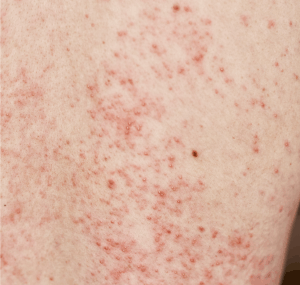
Sensitization or a Chemical Allergy?
by Bonnie Pellerin Ι June 7, 2023 Ι 3 Min Read
Related Articles:
![]()
Wearing Bug Spray and Sunscreen:
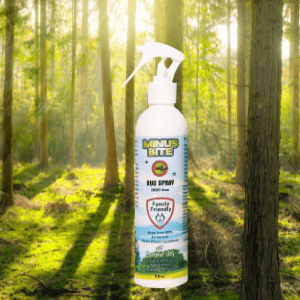
Understanding the Proper Application Order
by Minus Bite Ι June 14, 2023
Get the EarthSential Newsletter
Good deals, great advice & essentially necessary.
MORE ARTICLES:
Discover the power of plant-powered cleaners
Discover the Power of Plant-Powered Cleaners Discover the Power of Plant-Powered Cleaners with EarthSential, where sustainability meets efficacy, offering environmentally friendly cleaning solutions that guarantee a sparkling clean home while staying true to your...
spring cleaning the chemical-free way
Spring Cleaning the Chemical-Free Way As the blossoms start to bloom and the days grow longer, it's the perfect moment to invite the revitalizing spirit of spring into our living spaces. And what better method to achieve this than by embracing Spring Cleaning the...
9 reasons a clean toilet seat matters
9 Reasons a Clean Toilet Seat Matters It prevents the spread of germs Ensuring a clean toilet seat is more than just about appearances—it's about safeguarding your health and well-being in one of the most used spaces in your home. In this article, we'll explore 9...
Safe for skin bathroom cleaning
Safe for skin bathroom cleaning Cleaning for a healthier home Have you ever wondered if your bathroom cleaning is safe for skin? Did you know that chemicals can seep into your body through your skin? And have you ever thought about whether you're really getting rid of...
why does my teenager keep getting ear infections
Teenage Ear Infections Why does my teenager keep getting ear infections? Ugh...As a parent, I've been troubled by a recurring issue – my teenager keeps getting ear infections. After consulting with the doctor, it became apparent that one of the culprits behind these...
removing wax from our fruits and vegetables
The Hidden Truth Why Removing Wax from Our Fruits and Vegetables MattersHave you ever wondered why no one taught us in school about the importance of removing wax from our fruits and vegetables before eating them? It's a question that often goes unanswered, yet the...
Benefits of natural glass cleaners for your home
Sparkles with Clarity The Benefits of Natural Glass Cleaners for your HomeImagine your home as a haven of tranquility, where every window sparkles with clarity and every surface gleams with purity. With EarthSential's natural glass cleaner, this dream becomes a...
Lavender infused cleaning is a holistic retreat
Lavender Infused Cleaning is like a Holistic Retreat Cleaning – a task often met with sighs and reluctance. But what if we told you that cleaning could be your ticket to a stress-free oasis? Lavender infused cleaning is like embarking on a holistic retreat, where the...
do i have chemical sensitization or a chemical allergy
Suffering from chemical sensitization or a chemical allergy? When cleaning, are you experiencing symptoms of chemical sensitization or a chemical allergy, such as skin irritation, respiratory distress, headaches, or nausea, reacting adversely to specific cleaning...
natural cleaners verses diy cleaning solutions
Natural cleaners verses diy cleaning solutions, what's the difference? What are the key differences between using natural cleaners verses DIY cleaning solutions, and how do they impact our homes and the environment? When it comes to cleaning your home, you may have...


